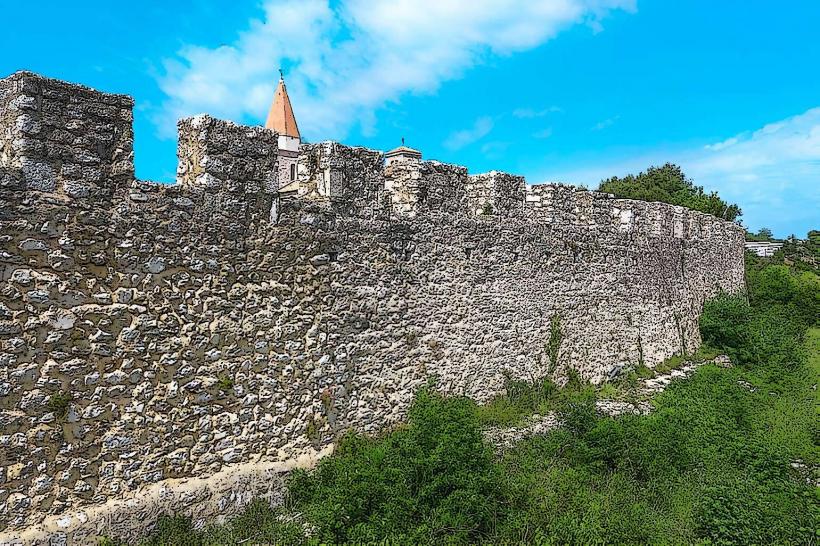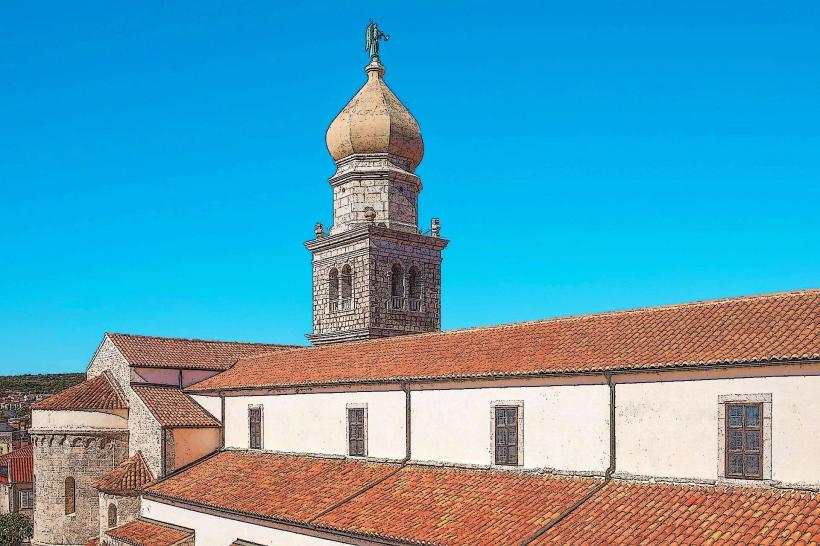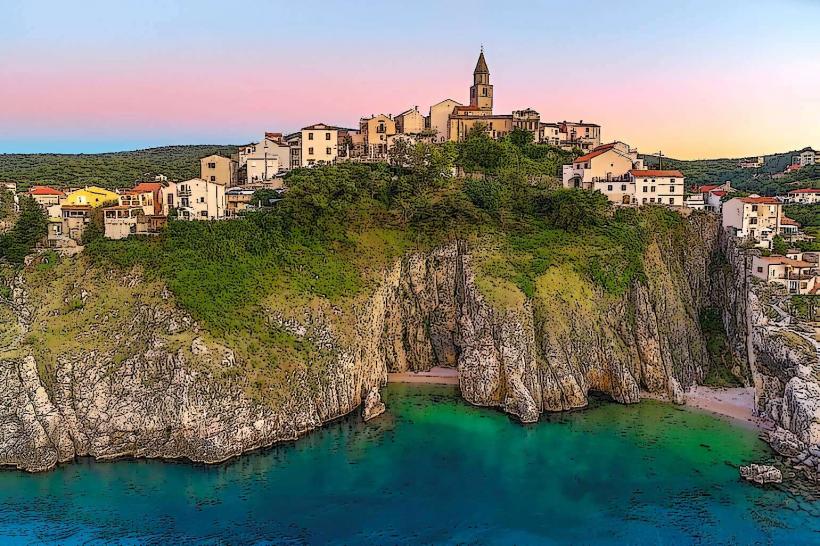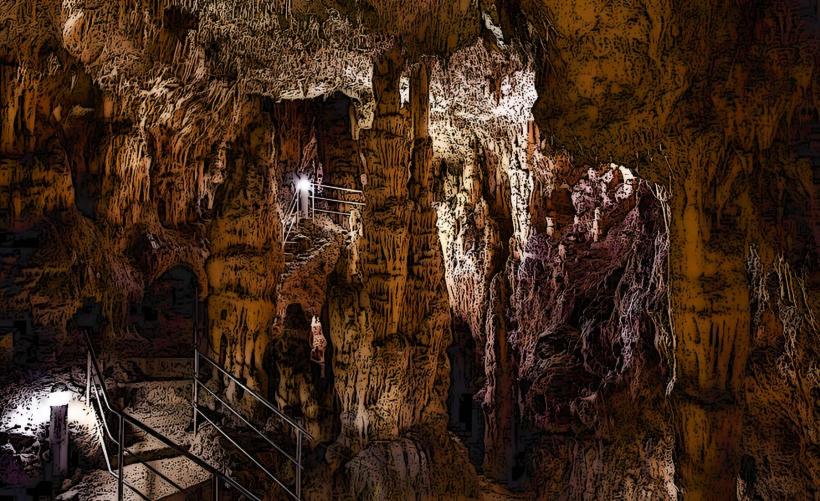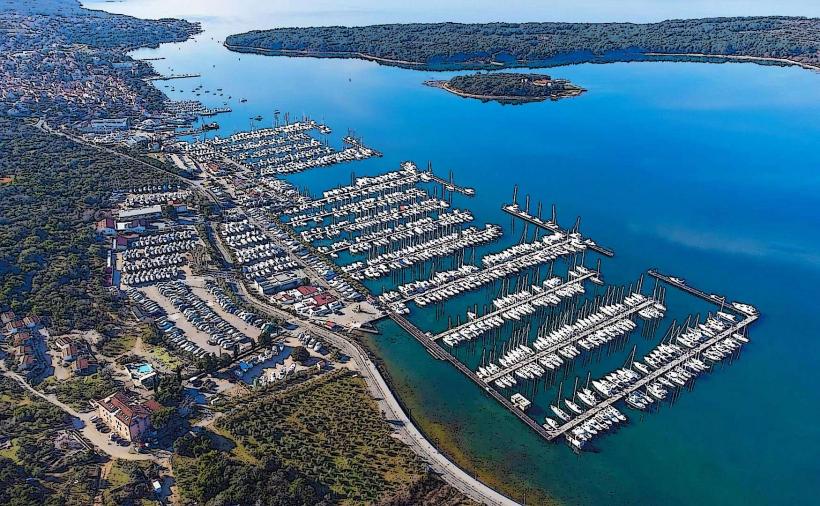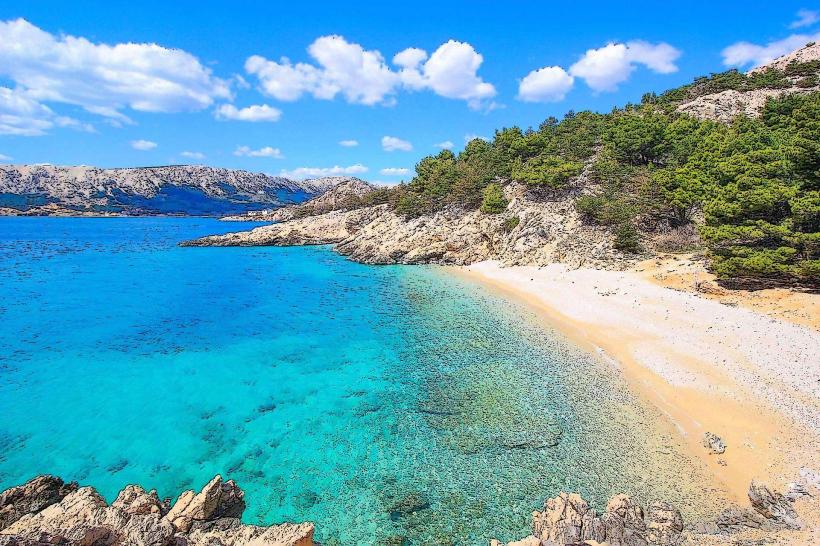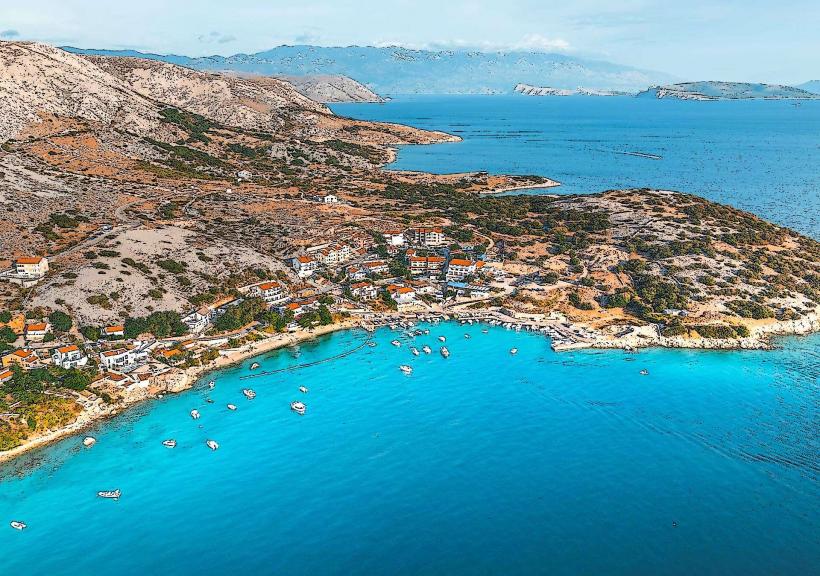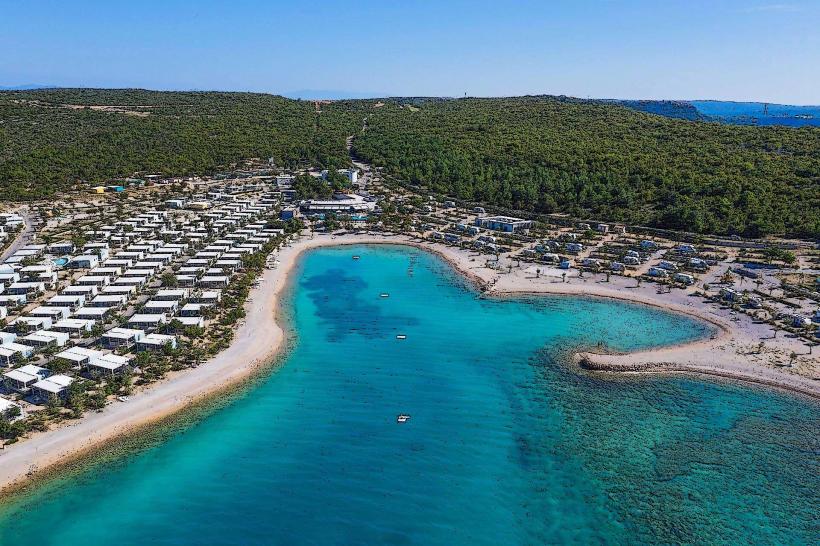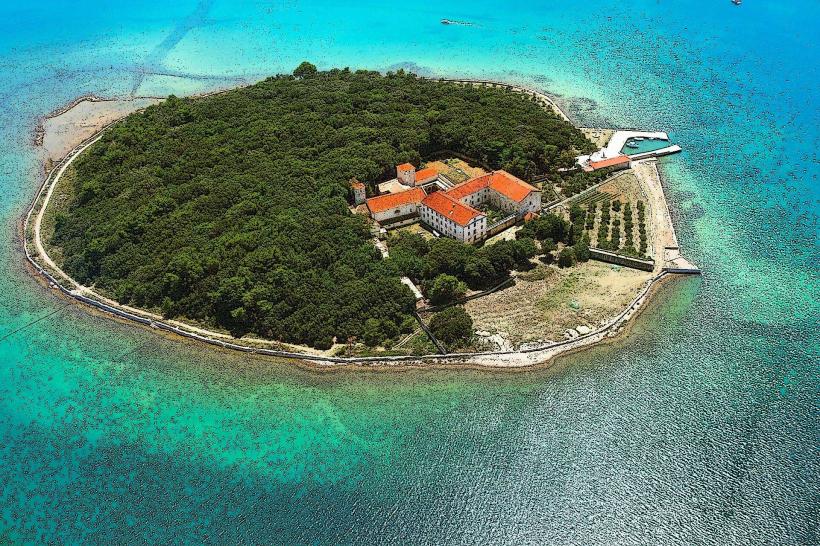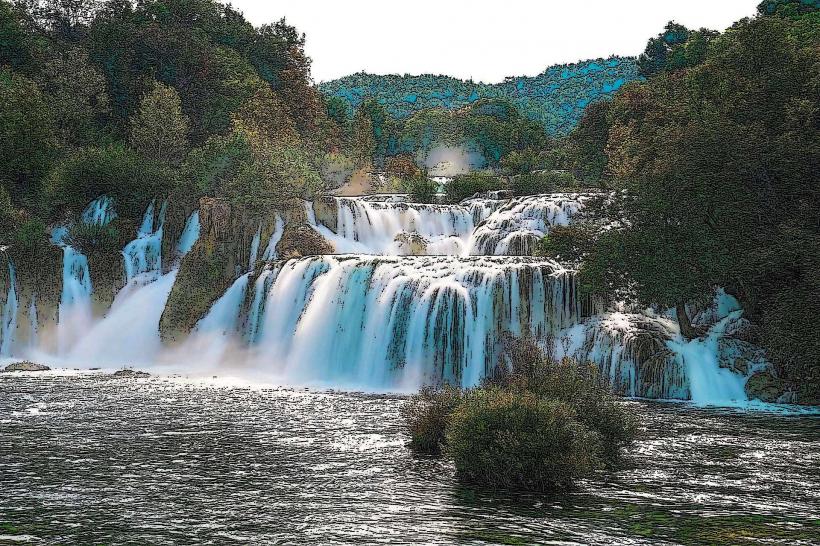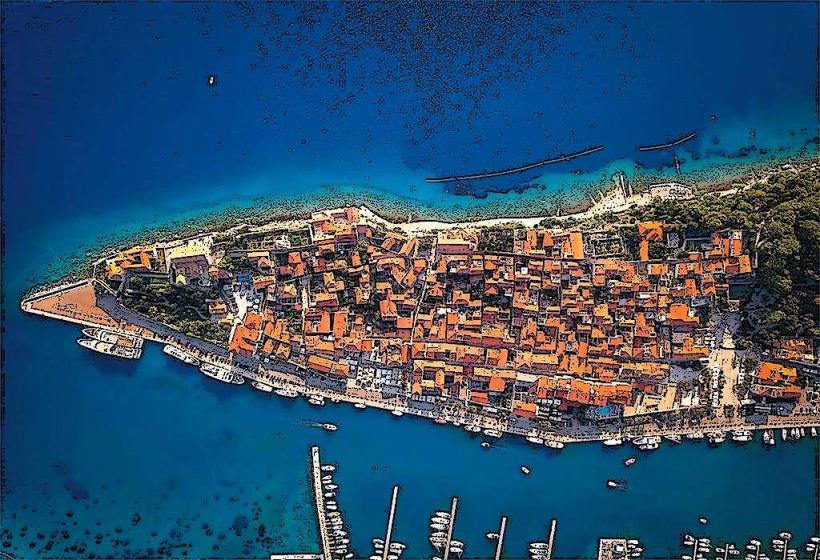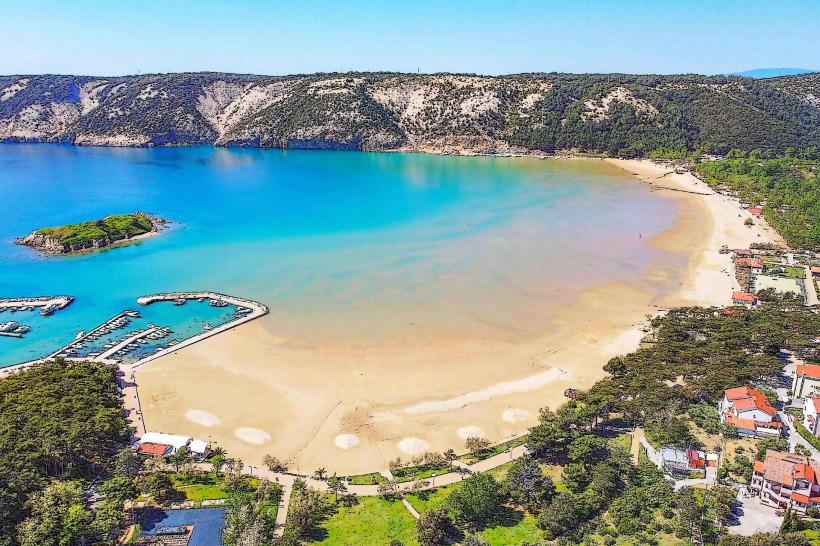Information
Landmark: Frankopan CastleCity: Krk
Country: Croatia
Continent: Europe
Frankopan Castle (Croatian: Frankopanska Kula) is a historic fortress located in Krk Town on Krk Island in Croatia. This castle is one of the most significant landmarks on the island, serving as a reminder of Krk’s medieval past and the influence of the Frankopan family, one of Croatia's most powerful noble families. The castle’s history, strategic location, and impressive architecture make it a popular destination for visitors interested in Croatia’s medieval heritage.
History and Architecture of Frankopan Castle
1. Origins and Construction
- Medieval Beginnings: The castle was built during the 12th century, likely as a defensive structure by the Frankopan family, who were the rulers of Krk and much of the surrounding region during the Middle Ages. The Frankopans were a prominent Croatian noble family, and their influence extended over much of the Dalmatian coast and Istria.
- Strategic Location: The castle is strategically located in the heart of Krk Town, overlooking the town’s harbor and the surrounding countryside. This positioning was chosen to provide a strong defensive vantage point, as well as to assert control over the island.
2. Architectural Features
- Fortified Structure: The Frankopan Castle is a fortified structure with thick stone walls designed for defense. Its design incorporates elements of both Romanesque and Gothic architecture. The castle is built from local stone, and its towers and walls were intended to protect the Frankopan family and their possessions from potential attacks.
- Defensive Towers: The castle features several defensive towers, with the main tower (known as the Donjon) being the most prominent. The tower was used as a lookout and a last line of defense if the castle was besieged. The tower has a circular base and high walls, making it one of the most recognizable features of the castle.
- Walls and Gates: The castle is enclosed by thick stone walls, some of which have survived to the present day. The entrance is guarded by a gate and a drawbridge, which were typical features of medieval fortresses designed to control access and protect the castle from invaders.
3. Frankopan Family and the Castle’s Role
- Frankopan Rule: The Frankopan family was a powerful Croatian dynasty that controlled Krk Island, as well as large areas of mainland Croatia, from the 12th century until the 17th century. The family played a key role in the political and military history of the region, aligning with various European powers throughout their rule.
- Fortress and Residence: While primarily a defensive fortress, the Frankopan Castle also served as the family’s residence and administrative center. It housed the local nobility and their court, and it played a central role in the governance of the island. The castle would have been a hub of both military and social activity during the medieval period.
- Decline of the Frankopans: The decline of the Frankopan family began in the 17th century, and their estates were seized by the Habsburg monarchy after the family was involved in a failed rebellion against the Austrian crown. After this time, the castle gradually fell into disrepair.
4. Renovation and Modern Use
- Preservation Efforts: In modern times, the castle has been partially restored and is now a significant historical monument. While much of the structure remains intact, there have been efforts to preserve and protect the castle’s key features, including its towers and walls.
- Museum and Cultural Center: Today, Frankopan Castle is home to a museum that displays artifacts related to the history of the Frankopan family and the island of Krk. The museum showcases medieval objects, including weapons, pottery, and tools, as well as documents and family portraits. The castle is also used as a venue for cultural events, exhibitions, and performances, making it a vibrant center for the local community.
Key Features to Explore at Frankopan Castle
1. The Main Tower (Donjon)
- The Donjon, or main tower, is the tallest and most iconic part of the castle. From here, visitors can enjoy panoramic views of Krk Town, the Adriatic Sea, and the surrounding island landscape. The tower was used for lookout purposes, and its height made it an ideal vantage point for spotting any approaching enemies.
2. The Courtyard and Walls
- Inside the castle, visitors can explore the courtyard, which would have been the central space for daily life and activities during the medieval period. The castle walls are also an important feature, offering a glimpse into the military architecture of the time. The walls are thick and sturdy, designed to withstand sieges and protect those inside.
3. The Museum Exhibits
- The museum inside Frankopan Castle offers an array of medieval artifacts that help tell the story of the Frankopan family and the history of Krk. These include weapons, armory, and religious items. The museum provides context about the role of the Frankopan family in Croatian history and their significance in the medieval and early modern periods.
4. The Chapel
- The castle is home to a small chapel, which would have been used by the Frankopan family and their court. The chapel is a place of quiet reflection and prayer, reflecting the religious importance of the period and the influence of the Catholic Church in the lives of the nobility.
Visiting Frankopan Castle
1. Location and Access
- Krk Town: The castle is located in the center of Krk Town, on Krk Island, which is easily accessible by car, bus, or ferry from the mainland. It is within walking distance of other notable landmarks in the town, including Krk Cathedral and the Krk Town Walls.
- Opening Hours: Frankopan Castle is open to visitors year-round, although it’s best to check the opening hours in advance, particularly during the off-season or for special events. The castle is often included in guided tours of Krk Town.
2. Guided Tours
- Guided tours are available for those who wish to learn more about the history of the castle and the Frankopan family. Knowledgeable guides provide insights into the architectural features of the castle, as well as the historical context surrounding the Frankopan dynasty.
3. Cultural Events
- The castle hosts various cultural events throughout the year, including music concerts, art exhibitions, and theatrical performances. These events make the castle a lively cultural center for both locals and visitors.
Why Visit Frankopan Castle?
Frankopan Castle offers a unique opportunity to step back into Croatia's medieval past. Its rich history, beautiful architecture, and role in the story of the Frankopan family make it a must-visit site for anyone interested in Croatian history, culture, and architecture. Whether you are exploring the defensive towers, admiring the panoramic views from the top of the Donjon, or learning about the Frankopan family’s influence, the castle provides a fascinating glimpse into the past of Krk Island and the surrounding region.

